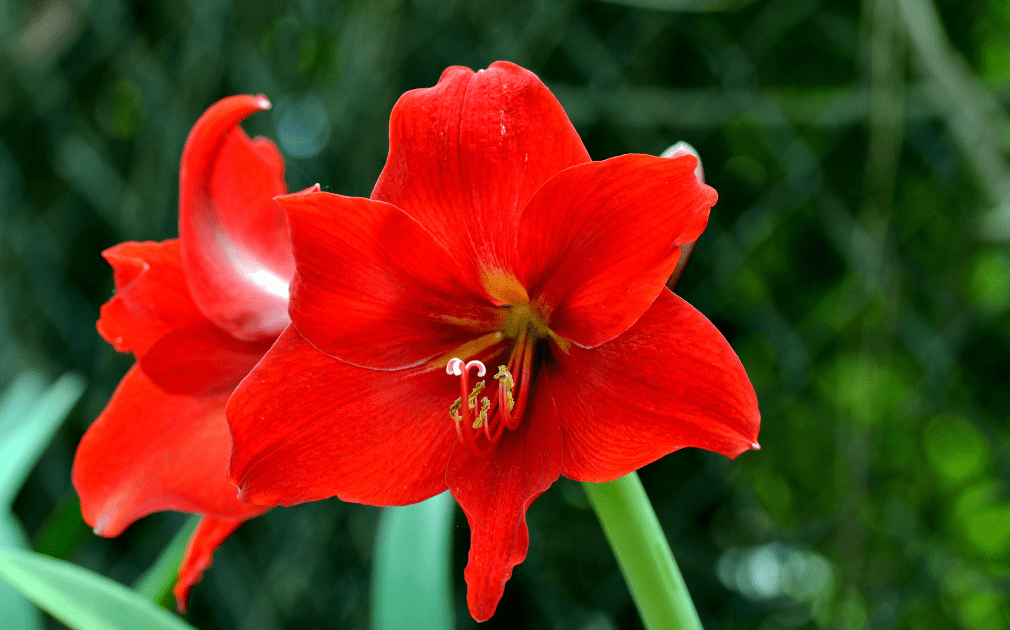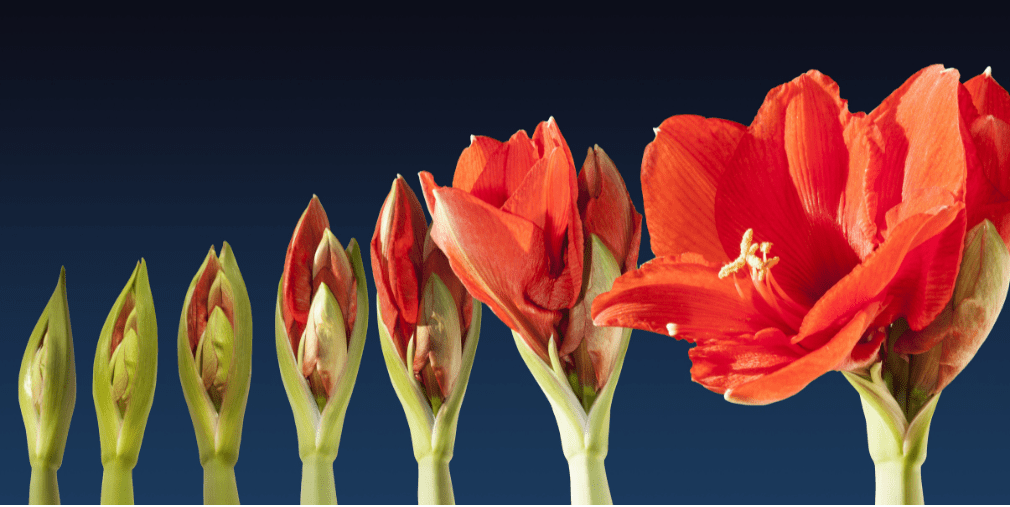Plants don’t often bloom when we tell them to, but ever since a friend gave me some instructions back in 1997, I’ve been able to get my amaryllis and Christmas cacti to bloom on demand. When I took the time to mark a few dates on my calendar and follow through, I got lovely blooms for the holiday season exactly when I wanted them. That little bit of knowledge piqued my interest, and I’ve done a bit of research since then. This post and the next convey what I’ve learned about amaryllis and Christmas cacti and controlling their bloom time. Let’s start with Amaryllis.
Amaryllis will bloom for you each year and believe it or not, you can use the same bulb for literally decades if you treat it right. These plants naturally grow in the spring and summer, and bloom in fall and winter, so we need to recreate those conditions on a timeline to get gorgeous flowers when we want them.

Timeline:
Start waking your dormant, bare bulbs 10-12 weeks before you want blooms (October 1 if planning for Christmas.) Note: If your bulb isn’t already dormant, start creating the artificial dormancy in mid-September.
Tip: For Christmas blooms, starting October 1 plant a bulb per week for 3 weeks if you want to ensure blooms happen on the desired date. Environmental conditions are naturally variable– the bulb, the soil, the moisture in the air, and a myriad of other things contribute to how fast a plant grows. Three bulbs will provide good insurance.
When purchasing an amaryllis bulb, go big. The bigger the bulb, the bigger the stems to support the blooms. Also, small bulbs may not flower for you as they may not be mature. Read more Timing a Glorious Amaryllis Bloom



